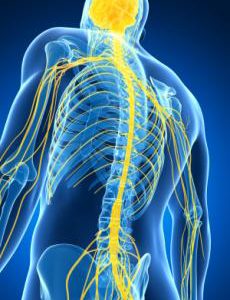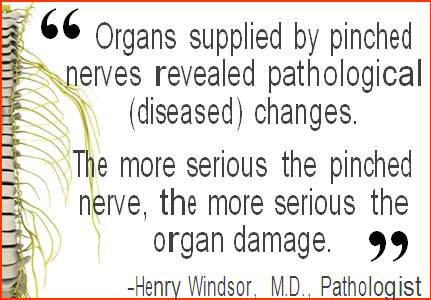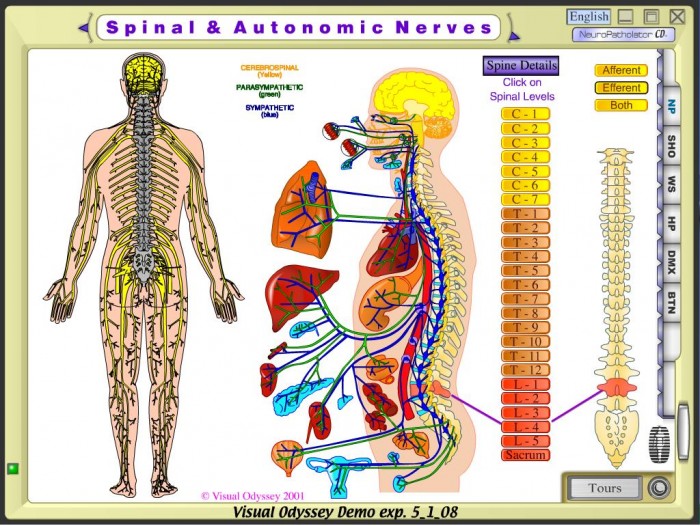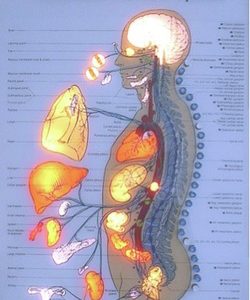 The Most Amazing Research
The Most Amazing Research
Henry Winsor, a medical doctor from greater Philadelphia, PA, was intrigued by patients who returned to health using chiropractic or osteopathic spinal care.
“How do chiropractors and osteopaths get people better without drugs or surgery?” he wondered.
He planned a unique experiment—he would dissect human and animal cadavers and see if there was a relationship between the health of the spine and any diseased organs he found.
Human & Cat Dissections
The University of Pennsylvania (in Philadelphia) gave Dr. Windsor permission to carry out his experiments. In a series of three studies, he dissected a total of 75 human and 22 cat cadavers, finding 221 diseased organs. Was there a relationship between the diseased organs and the spine? Dr. Winsor wrote:
[Of the 221 diseased organs] 212 were observed to belong to the same sympathetic [nerve] segments as the vertebrae in curvature…. These figures cannot be expected to exactly coincide … for an organ may receive sympathetic filaments from several spinal segments.
In other words, Dr. Windsor found a nearly 100% correlation between “minor curvatures” of the spine and diseases of the internal organs. Some of the diseases and their related spinal or vertebral segments are:
Heart Disease—All twenty cases of heart and pericardium conditions had the upper five thoracic vertebrae (T1-5) misaligned.
Lung Disease—All twenty-six cases of lung disease had spinal misalignments in the upper thoracic (T1-4) area.
Stomach Disease—All nine cases of spinal misalignment in the mid-thoracic (T5-9) area had stomach disease.
Liver Disease—All thirteen cases of liver disease had misalignments in the mid-thoracic (T5-9) area.
Gallstones—All five cases of gallstone disease had spinal misalignments in the mid-thoracic (T5-9) area.
Pancreas—All three cases of pancreas disease had spinal misalignments in the mid-thoracic (T5-9) area.
Spleen—All eleven cases of spleen disease had spinal misalignments in the mid-thoracic (T5-9) area.
Kidney—All seventeen cases of kidney disease had misalignments in the lower thoracic (T10-12) area.
Prostate and Bladder Disease—All eight cases of prostate and bladder disease had misalignments in the lumbar (L1-3) vertebrae.
Uterus—The two cases of uterine conditions had L2 misaligned.
 The Chiropractic Approach
The Chiropractic Approach
Chiropractors and traditional osteopaths have observed patients recovering under spinal care from nearly every disease or condition to which the flesh is heir. Dr. Windsor’s studies give weight to the claim that spinal misalignments that interfere with body function (called “vertebral subluxations” by chiropractors and “spinal lesions” by osteopaths) can have a profound impact on internal organ health.
Exactly how does spinal nerve pressure cause heart, kidney, lung, uterine or other organ disease?
The mechanisms are not fully understood. But that has never prevented healers from giving people help and relief. For example, for decades no one knew how aspirin worked but that didn’t stop MDs from prescribing it.
Windsor’s Legacy
Dr. Henry Windsor’s insights and research were prophetic indeed. The medical profession has largely ignored Dr. Windsor’s work. However, his studies have been expanded upon by scientists working in many disciplines who continue to research the complex relationship between the vertebral subluxation complex and internal organ disease. This field is one of the fastest growing and most exciting areas of research in the healthcare sciences—and chiropractic thrives as one of its leading advocates.
 Are You Connected?
Are You Connected?
The nerves connecting your internal organs to your spine must remain free of spinal stress, interference or blockages. If these nerves are stressed or impinged because your spine is out of alignment your health could suffer.
You may not know it or feel it right away, but if you have a vertebral subluxation your internal organs may be slowly weakening and could eventually malfunction and become diseased.
Why wait until you have a kidney, heart, lung, prostate, liver or other problem before you get your spine and structural system checked for stress? Get a chiropractic checkup now to keep your nerve-organ connection free from stress before long-standing subluxations cause serious damage.
What Contributes To Health?
Among the many factors contributing to your health are how you handle emotional stress, your inherited weaknesses and strengths, your use of drugs, your levels of exercise and relaxation and the quality of your air, food and water.
Along with the health factors listed above, a healthy spine and structural system are absolutely essential. In some people it is the major factor and can make the difference between a life of health, strength and vitality or a life of disease, weakness and disability.
Are you and your family carrying subluxations in your bodies? Only a chiropractic checkup can tell!
Call Performance Chiropractic at (661) 942-5000 for a checkup.
References
All quotes taken from: Winsor H. Sympathetic segmental disturbances—II. The evidence of the association, in dissected cadavers, of visceral disease with vertebrae deformities of the same sympathetic segments. Medical Times. November 1921;49:267-271.